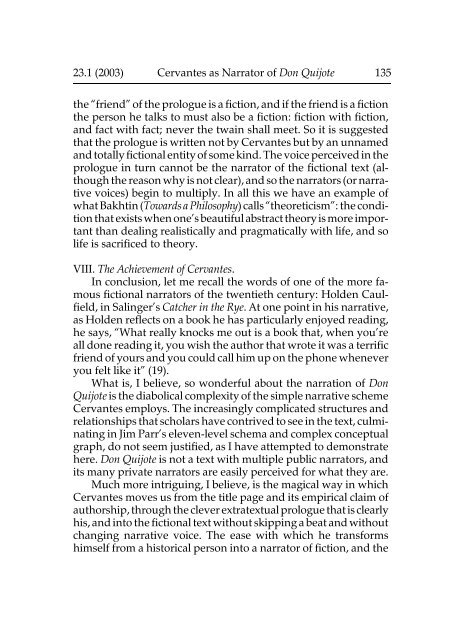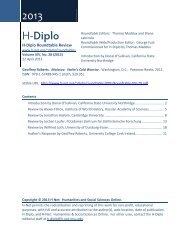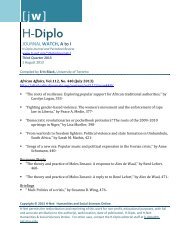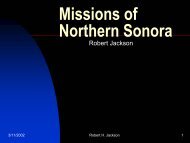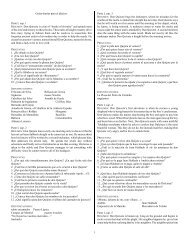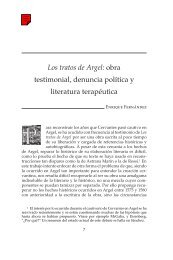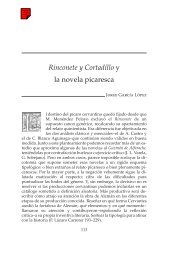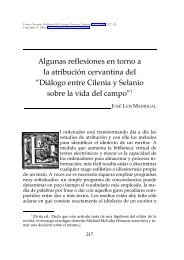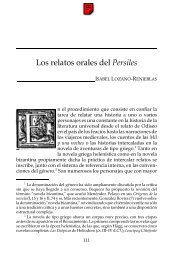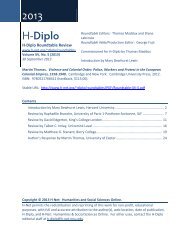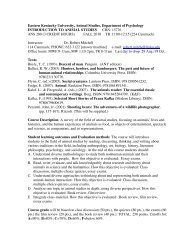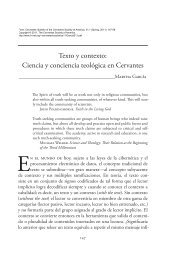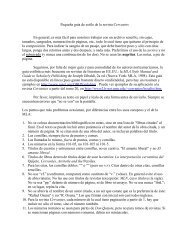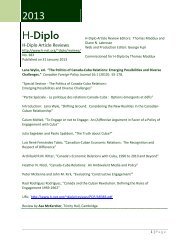Cervantes as Narrator of Don Quijote - H-Net
Cervantes as Narrator of Don Quijote - H-Net
Cervantes as Narrator of Don Quijote - H-Net
Create successful ePaper yourself
Turn your PDF publications into a flip-book with our unique Google optimized e-Paper software.
23.1 (2003) <strong>Cervantes</strong> <strong>as</strong> <strong>Narrator</strong> <strong>of</strong> <strong>Don</strong> <strong>Quijote</strong> 135<br />
the “friend” <strong>of</strong> the prologue is a fiction, and if the friend is a fiction<br />
the person he talks to must also be a fiction: fiction with fiction,<br />
and fact with fact; never the twain shall meet. So it is suggested<br />
that the prologue is written not by <strong>Cervantes</strong> but by an unnamed<br />
and totally fictional entity <strong>of</strong> some kind. The voice perceived in the<br />
prologue in turn cannot be the narrator <strong>of</strong> the fictional text (although<br />
the re<strong>as</strong>on why is not clear), and so the narrators (or narrative<br />
voices) begin to multiply. In all this we have an example <strong>of</strong><br />
what Bakhtin (Towards a Philosophy) calls “theoreticism”: the condition<br />
that exists when one’s beautiful abstract theory is more important<br />
than dealing realistically and pragmatically with life, and so<br />
life is sacrificed to theory.<br />
VIII. The Achievement <strong>of</strong> <strong>Cervantes</strong>.<br />
In conclusion, let me recall the words <strong>of</strong> one <strong>of</strong> the more famous<br />
fictional narrators <strong>of</strong> the twentieth century: Holden Caulfield,<br />
in Salinger’s Catcher in the Rye. At one point in his narrative,<br />
<strong>as</strong> Holden reflects on a book he h<strong>as</strong> particularly enjoyed reading,<br />
he says, “What really knocks me out is a book that, when you’re<br />
all done reading it, you wish the author that wrote it w<strong>as</strong> a terrific<br />
friend <strong>of</strong> yours and you could call him up on the phone whenever<br />
you felt like it” (19).<br />
What is, I believe, so wonderful about the narration <strong>of</strong> <strong>Don</strong><br />
<strong>Quijote</strong> is the diabolical complexity <strong>of</strong> the simple narrative scheme<br />
<strong>Cervantes</strong> employs. The incre<strong>as</strong>ingly complicated structures and<br />
relationships that scholars have contrived to see in the text, culminating<br />
in Jim Parr’s eleven-level schema and complex conceptual<br />
graph, do not seem justified, <strong>as</strong> I have attempted to demonstrate<br />
here. <strong>Don</strong> <strong>Quijote</strong> is not a text with multiple public narrators, and<br />
its many private narrators are e<strong>as</strong>ily perceived for what they are.<br />
Much more intriguing, I believe, is the magical way in which<br />
<strong>Cervantes</strong> moves us from the title page and its empirical claim <strong>of</strong><br />
authorship, through the clever extratextual prologue that is clearly<br />
his, and into the fictional text without skipping a beat and without<br />
changing narrative voice. The e<strong>as</strong>e with which he transforms<br />
himself from a historical person into a narrator <strong>of</strong> fiction, and the


